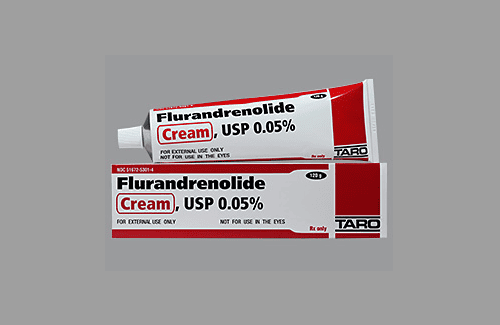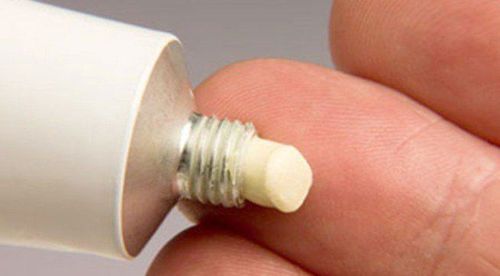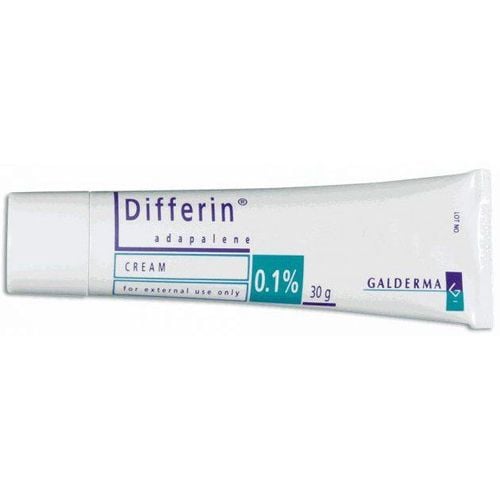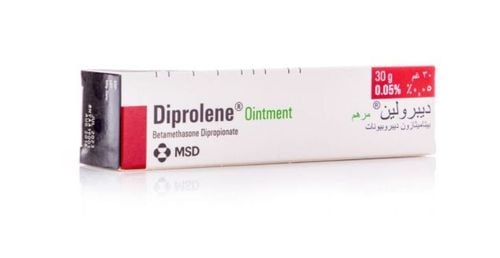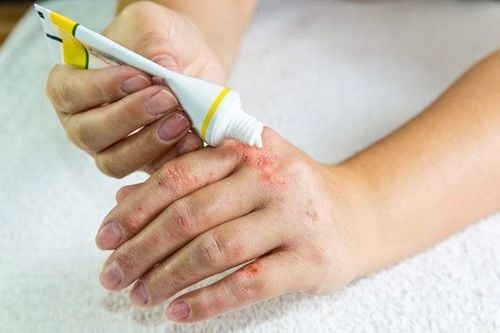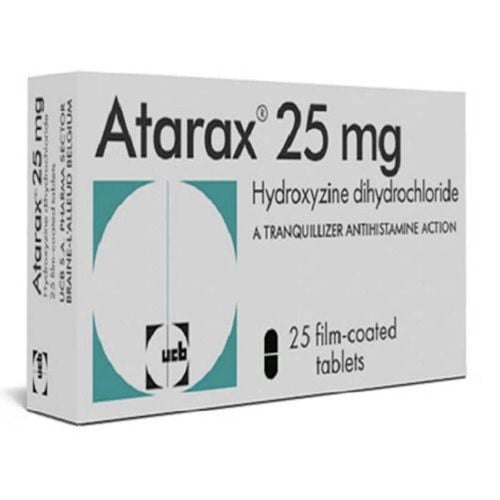This is an automatically translated article.
Diagnosis of atopic dermatitis is not difficult, but the treatment process is still challenging because of the high frequency of recurrence of the disease. Patients with the disease need to understand their pathology to coordinate effective treatment with specialized doctors, in which it is necessary to know what atopic dermatitis to eat.1. Atopic dermatitis is what disease?
Atopic dermatitis or eczema is a disease related to inflammatory skin lesions. The direct causative agent of the disease is still unknown. Local factors, living environment and the activity of the body's immune system are considered to be related to the onset of atopic dermatitis.
Atopic dermatitis is a common skin disease, not contagious, not life-threatening, but causing a lot of trouble in the life of sufferers. This is a skin condition caused by an inflammatory process. Characteristic manifestations of the disease are dry skin, red papules with vesicles in the acute phase, lichenification and thickening of the skin when the disease progresses and lasts.
Atopic dermatitis can appear in any population but is most common in children under two years of age. The prevalence of the disease in the community is currently unknown, with no difference between the sexes. The disease is related to local factors, the environment and the activity of the immune system. People with atopic dermatitis may have other diseases at the same time such as allergic rhinitis, bronchial asthma, food allergies, urticaria... Equip yourself with relevant knowledge to help patients control better disease.

Viêm da cơ địa gây tổn thương trên da người bệnh
2. Causes of atopic dermatitis
The cause of atopic dermatitis is unknown. Many experts agree that an allergic site, combined with factors from the external environment and the functioning of the immune system, is the cause of the onset or worsening of the disease.
Statistics show that patients with atopic dermatitis often have comorbidities such as bronchial asthma, contact rhinitis, urticaria. More than 35% of children with eczema will develop asthma when they grow up.
Allergens in the environment are very diverse, the most common are dust, pollen, wool, house mites or insects, foods such as eggs, milk, fish, peanuts. They activate T lymphocytes and macrophages, triggering the action of the body's protective immune system. In addition, the allergen may appear from within the body and have the same ability to activate T lymphocytes as foreign factors.
The decline in the function of the skin's natural protective barrier is one of the factors that aggravate the disease. The ceramic layer on the surface of the skin is no longer intact, causing dehydration, reducing the moisture content of the skin, making the disease worse and difficult to treat.
3. Principles of treatment of atopic dermatitis
Treatment of atopic dermatitis helps to relieve symptoms and prevent recurrence of the disease. To get good results, the treating doctor and the patient need to establish a close cooperation to follow the treatment principles well:
Use a combination of topical drugs and systemic drugs: Corticosteroids and creams Humectants are topical agents used in all stages of the disease. However, corticosteroids are drugs with many undesirable effects, so their use should be under the guidance and indications of specialists. If the patient has contraindications to corticosteroids, non-steroidal anti-inflammatory drugs (NSAIDS) may be used instead. When there is a bacterial superinfection on the skin lesions, the patient may be prescribed topical antibiotics or oral antibiotics depending on the specific case. Antihistamines are selected to treat pruritus symptoms, avoid irritating the patient to scratch and further scratch existing skin damage. Prophylaxis of recurrent atopic dermatitis: Patients can reduce the frequency of recurrences of the disease by good adherence to treatment, avoiding specific known allergens, and not using very hot water. and avoid using strong detergents to clean the body, ...

Người bị bệnh viêm da cơ địa nên hạn chế sử dụng xà phòng có tính tẩy rửa mạnh
4. What do patients with atopic dermatitis eat?
Prophylaxis of recurrent atopic dermatitis is one of the top priority goals. One of the preventive measures is to limit the use of foods or active ingredients that are likely to cause irritation and allergies to users. Knowing what atopic dermatitis to abstain will help patients ensure good prevention. Some foods people with atopic dermatitis should not use include:
Meat: This is an animal product, the ingredient contains a lot of saturated fat, so it is easy to promote inflammatory reactions. Many studies show that atopic dermatitis patients should not eat a lot of red meat. White meat such as chicken, duck and fish can be used as an alternative source of protein for beef or pork in the daily diet. Milk and dairy products: This is a common allergenic food group with a rich source of saturated fat. Candy: Foods high in sugar can aggravate the symptoms of dermatitis, especially the chemical sugars. Starch: Should replace starchy foods like pasta or bread with whole grains to strengthen the digestive system and the body's immune system. Foods that are too high in starch are likely to increase the symptoms of atopic dermatitis. At Vinmec International General Hospital, there is a package of examination and advice on treatment of atopic dermatitis to help customers assess their general condition and advise on measures to prevent recurrence.
When registering for a package of examination and consultation for treatment of atopic dermatitis, customers will receive: Dermatology specialist examination. Perform tests such as: quantitative IgE, fresh mycobacteria, specific IgE quantification with respiratory allergens - food (Panel 1 Viet), test Rida Allergy Screen (panel 1)...
To be examined and treated with leading Dermatologists in Vinmec, you can contact HERE.
SEE ALSO:
Package of examination and advice on treatment of atopic dermatitis Atopic dermatitis: What you need to know Children with atopic dermatitis: How to take care of it properly?




